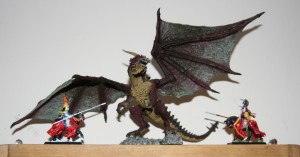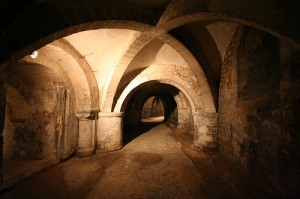Day two of the 2011 NDIIPP partners meeting featured several workshops focusing on digital stewardship. Highlights from each of the workshops are below.
Slaying the Dragons: What is at risk and how do we rescue it? Sponsored by the Content Working Group.
The group discussed the goals of a proposed “adoption clearinghouse” for at-risk data. People talked about how best to define at-risk content and identified four broad content categories: public/government; cultural heritage; news/event journalism; and data sets, directories and software. There was consensus that we need to reach out to communities that have or know about at-risk data, including scientists, citizens, government agencies, artists and enthusiasts. This outreach should include raising awareness about digital preservation as well as education in best practices.
And the Winner Is…: How does a community recognize achievement? Sponsored by the Innovation Working Group.
The purpose of the workshop was to come up with a slate of annual awards that recognize important developments in relation to digital preservation. There was brainstorming about potential award categories, and consensus emerged around ideas relating to development, practice and alternative explorations. General agreement formed as well around the concept of awards for outstanding students and for individuals outside the professional stewardship community who contribute a positive impact. The working group agreed to form an action team to further develop these concepts.
Tools at Risk: What are creative models for sustaining open source digital stewardship tools? Sponsored by the Infrastructure Working Group.
Participants decided to structure the workshop as an open forum discussion. Two major themes emerged, including ideas for how to successfully transition from a temporary grant funding basis to a long term self-sustaining model in situations where it was appropriate. The other heavily discussed theme involved the necessary balance between developing a software tool and building a user community. In some cases a tool can be brought to multiple existing communities if we can speak their language and show how we can meet their needs.
Digital Preservation in a Box: What are the key resources for digital preservation and education and outreach? Sponsored by the Outreach Working Group.
The box here is viewed as a toolkit that can provide introductory-level information about digital preservation. The audience for the toolkit includes those who are unfamiliar with the subject but routinely create and manage digital information, as well as library and information science instructors who build digital preservation modules for classroom use. The workshop aimed to refine the structure for the toolkit and identify additional content. Participants also discussed ideas for where to house the toolkit, and how it could work within a formal curriculum.
Tales from the crypt: emerging practices in large-scale storage. Sponsored by the Infrastructure Working Group.
Participants centered their discussion around the the need to negotiate responsibilities for digital storage. This relates to establishing distinct responsibilities over time during the digital life cycle, such as who decides what to preserve (intellectual stewardship), who pays for preservation (administrative stewardship), and who actually does the preservation (technical stewardship). Part of the challenge is in identifying the trigger” events that should prompt hand-offs with respect to these roles. Mechanisms such as service-level agreements, memoranda of understanding and “living wills” might manage such hand-offs.
The Challenge Challenge: What are ways we can spark digital preservation innovation?
Sponsored by the Innovation Working Group.
This workshop aimed to consider new models to inspire innovation within the digital stewardship community. Ideas discussed included: technical challenge of stability in digital archiving; student software projects; and crowdsourced funding models. Talk about the stability challenge focused on ideas for bit stability, including wiki-based collaboration. Discussion about student software contributions considered supporting apps for geocoded data and displaying NDSA-member content though shared computer screen wallpaper. Crowdsourced funding was seen as an exciting possibility, but one that could present new policy issues for organizations.
I Can Haz Standardz: What standards should be in the digital preservation toolbox? Sponsored by the Standards and Practices Working Group.
The group discussed how to identify and describe existing digital preservation standards and best practices, including the best tool to capture and provide access to the resulting information. Several participants voice support for tailored searches within the knowledge base to address the need of software developers and others. There was also consideration of a survey of NDSA members–and perhaps eventually others–regarding the standards and practices in current use, as well as any perceived gaps.
Developing Cutting-edge Internship Programs in Digital Preservation: What Are the Essential Elements? Sponsored by OSI Internships.
The workshop discussed two areas. The first area addressed desirable elements for internships, including timing during the school year; explanation of the digital life cycle; and developing a deliverable that will be of value to both intern and host institution. The second area addressed effective mentorship. A good mentor, it was suggested, has good teaching and project-management skills, enough time, and a positive view of the organization. There should be a process to evaluate matches early on and make changes if they are not right. The workshop’s comments will help inform an upcoming needs-assessment survey of the community.


